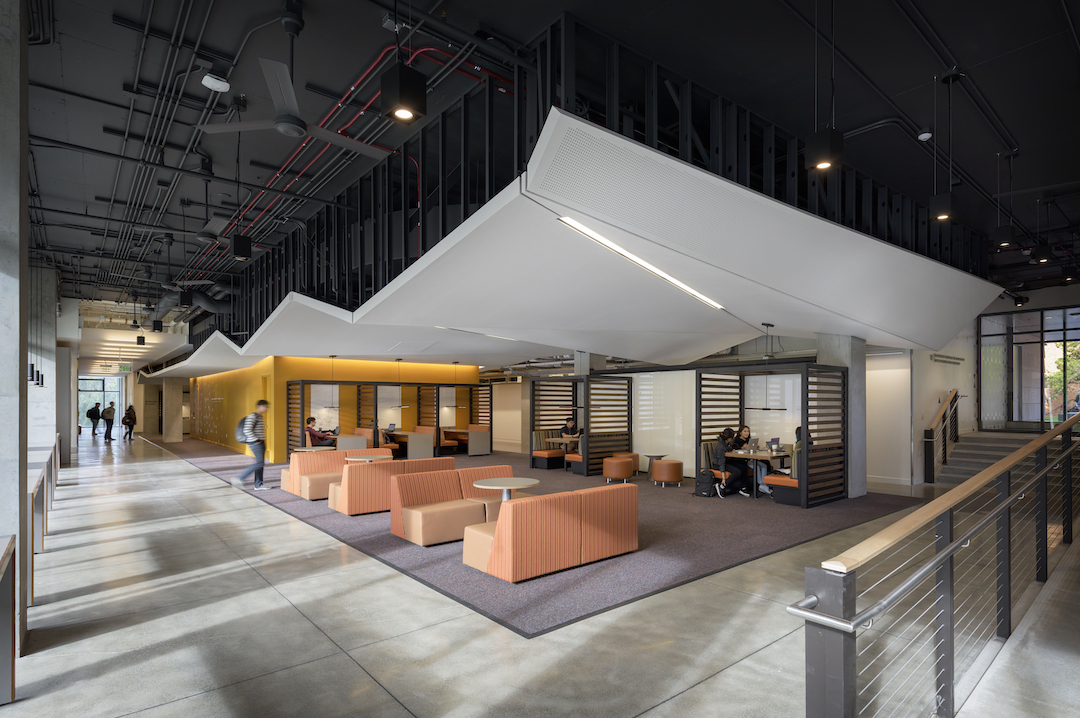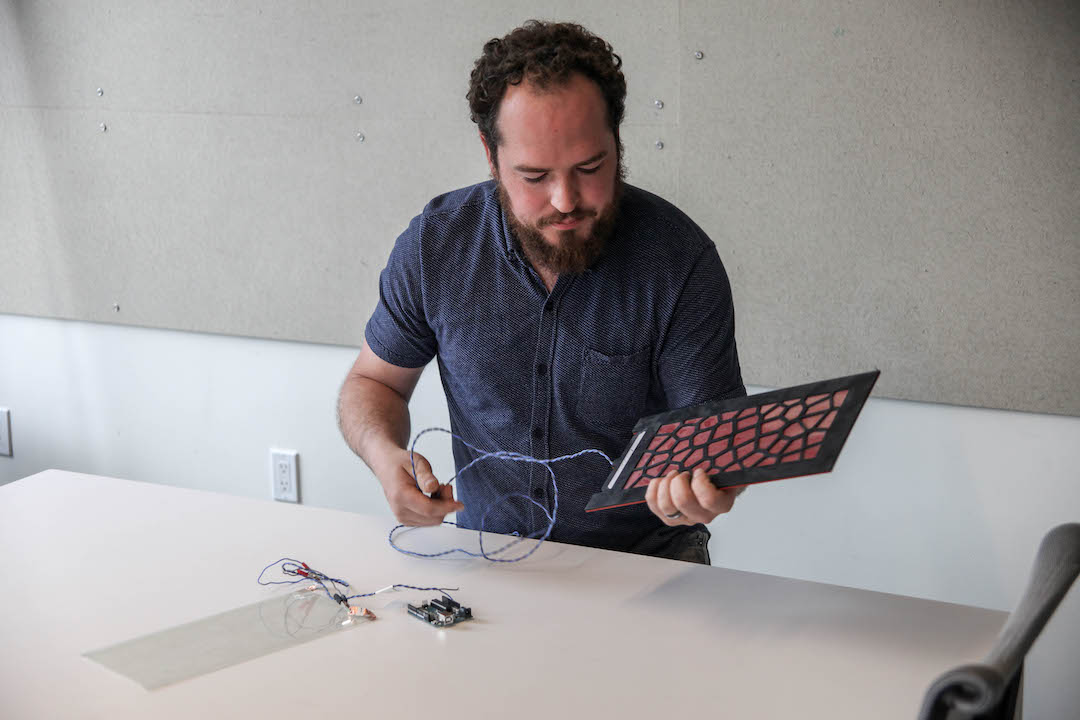Dane Stokes started using computational design while an undergraduate at the University of Pennsylvania, where it helped him manage a series of fabrication projects that included wall systems with several hundred unique panel components.
Now, computational design is one of the AEC industry’s buzzwords, and Stokes, a Design Technology Specialist with ZGF Architects’ Seattle office for the past three years, has seen his firm apply data to the design of a range of projects. These include the 41-story 2014 Fairview Avenue apartment tower in Seattle, whose wavy, curved exterior design required literally hundreds of computer iterations to get it right; and a 1.2 million-sf corporate headquarters in Belleview, Wash., where ZGF had to figure out how 15,000 employees would interact, especially during peak periods like lunch hours.
ZGF’s investigation for the latter project included interviews with company employees and conversations with the client’s consultants on security, IT, even food service. Now that the building has opened, Stokes says that ZGF might keep tracking occupant traffic with machine-learning sensors and cameras.
 ZGF is using computational design to inform all of its projects, including the 78,000-sf NanoES research and collaboration building at the University of Washington. Photo: Aaron Leitz Photography
ZGF is using computational design to inform all of its projects, including the 78,000-sf NanoES research and collaboration building at the University of Washington. Photo: Aaron Leitz Photography
ZGF gathers pre- and post-occupancy data with intent to provide optimal comfort and circulation. Stokes refers specifically to the 78,000-sf Nano Engineering and Sciences research and collaboration building at the University of Washington. He notes that this building is cooled passively, and that the building team “tried out a lot of progressive HVAC systems.” ZGF conducted questionnaires of occupants about how they were experiencing the space, and used sensors to track those experiences.
Stokes says the Nano project was the first where ZGF “located the responses,” so that if several people who complained that they were either too hot or too cold were actually working near each other, that would be a reliable clue about where and how the HVAC system needed adjusting.
SEE ALSO: Say 'Hello' to erudite machines
Stokes sees opportunities for computational design to reduce materials, and to free designers from being mired in mundane or labor-intensive tasks, such as documentation, to focus on design decisions “that really affect our finished product.” As algorithms and computing systems become more sophisticated and powerful, designers will be able to communicate more generally with computer programs they rely on for work production.
ZGF uses computational solutions on all of its projects. And its office serves as a kind of test bed for “failing forward,” he says. “There’s no point in designing something if it doesn’t make it into the project,” says Stokes. The goal is “to continuously improve on every iteration of a building design.”
Related Stories
Digital Twin | Jul 31, 2023
Creating the foundation for a Digital Twin
Aligning the BIM model with the owner’s asset management system is the crucial first step in creating a Digital Twin. By following these guidelines, organizations can harness the power of Digital Twins to optimize facility management, maintenance planning, and decision-making throughout the building’s lifecycle.
AEC Innovators | Jun 15, 2023
Rogers-O'Brien Construction pilots wearables to reduce heat-related injuries on jobsites
Rogers-O'Brien Construction (RO) has launched a pilot program utilizing SafeGuard, a safety-as-a-service platform for real-time health and safety risk assessment. Non-invasive wearables connected to SafeGuard continuously monitor personnel to prevent heat exhaustion on jobsites, reducing the risk of related injuries. RO is the first general contractor to pilot this program.
Contractors | May 26, 2023
Enhanced use of data is crucial for improving construction job site safety
Executives with major construction companies say new digital tools are allowing them to use data more effectively to reduce serious safety incidents and improve job site safety.
AEC Tech Innovation | May 12, 2023
Meet Diverge, Hensel Phelps' new ConTech investment company
Thai Nguyen, Director of Innovation with Hensel Phelps, discusses the construction giant's new startup investment platform, Diverge.
Sustainability | May 1, 2023
Increased focus on sustainability is good for business and attracting employees
A recent study, 2023 State of Design & Make by software developer Autodesk, contains some interesting takeaways for the design and construction industry. Respondents to a survey of industry leaders from the architecture, engineering, construction, product design, manufacturing, and entertainment spheres strongly support the idea that improving their organization’s sustainability practices is good for business.
Design Innovation Report | Apr 27, 2023
BD+C's 2023 Design Innovation Report
Building Design+Construction’s Design Innovation Report presents projects, spaces, and initiatives—and the AEC professionals behind them—that push the boundaries of building design. This year, we feature four novel projects and one building science innovation.
AEC Tech Innovation | Apr 27, 2023
Does your firm use ChatGPT?
Is your firm having success utilizing ChatGPT (or other AI chat tools) on your building projects or as part of your business operations? If so, we want to hear from you.
Design Innovation Report | Apr 19, 2023
Reinforced concrete walls and fins stiffen and shade the National Bank of Kuwait skyscraper
When the National Bank of Kuwait first conceived its new headquarters more than a decade ago, it wanted to make a statement about passive design with a soaring tower that could withstand the extreme heat of Kuwait City, the country’s desert capital.
Design Innovation Report | Apr 19, 2023
HDR uses artificial intelligence tools to help design a vital health clinic in India
Architects from HDR worked pro bono with iKure, a technology-centric healthcare provider, to build a healthcare clinic in rural India.
Design Innovation Report | Apr 19, 2023
Meet The Hithe: A demountable building for transient startups
The Hithe, near London, is designed to be demountable and reusable. The 2,153-sf building provides 12 units of business incubator workspace for startups.

















